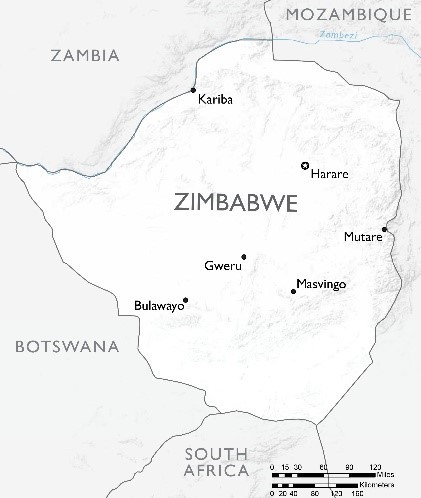- What We Do
- Agriculture and Food Security
- Democracy, Human Rights and Governance
- Economic Growth and Trade
- Education
- Ending Extreme Poverty
- Environment and Global Climate Change
- Gender Equality and Women's Empowerment
- Global Health
- Water and Sanitation
- Working in Crises and Conflict
- U.S. Global Development Lab

July 25, 2017
Food Security Situation
-
Economic and environmental challenges undermine food security in Zimbabwe, according to the UN World Food Program (WFP). Poverty, cash shortages, limited livelihood options, and economic and political instability impair food access. In addition, more than 4 million Zimbabweans--almost a third of the population--were food-insecure at the beginning of 2017 after a serious El Niño-induced drought crippled the previous agricultural season.
-
This year, increased planting and good rains have benefitted production in Zimbabwe. As a result, the UN Food and Agricultural Organization (FAO) projects that the nation's 2017 maize harvest will be well above average, with yields more than four times larger than those of 2016. Furthermore, maize meal prices have remained stable in recent months. These favorable conditions will likely contribute to Minimal (IPC Phase 1) levels of food insecurity for many populations through September, according to the USAID-funded Famine Early Warning Systems Network (FEWS NET).
-
However, households in southern Zimbabwe are facing declining water supplies, limiting agricultural production and livestock pasture, FEWS NET reports. In addition, poor farmers in the south and less productive parts of the north will likely only harvest 3-4 months of staple crops; starting in September, these households will be forced to find other sources of food. FEWS NET expects conditions to deteriorate, with many regions experiencing Stressed (IPC Phase 2) or Crisis (IPC Phase 3) food insecurity outcomes between October 2017 and January 2018; some poor households will require humanitarian assistance as they empty their food stores and use unsustainable coping strategies--such as the sale of assets--to meet their food needs. In addition, cash is scarce across Zimbabwe, undermining the income potential and food security of households relying on agricultural sales, petty trading, and daily labor.
Food Assistance Programs
- During the 2016-2017 lean season, which peaked between January and March 2017, the Office of Food for Peace (FFP) partnered with WFP, World Vision, and the UN Children's Fund (UNICEF) to address immediate food needs in Zimbabwe. FFP has contributed over $100 million of FY 2016 and FY 2017 funding to provide emergency lean season food assistance to drought-affected populations.
- FFP also supports two five-year development programs through World Vision and Cultivating New Frontiers in Agriculture (CNFA) in four provinces of southern Zimbabwe. These programs aim to improve the nutritional status of children under five, expand and diversity agricultural production, increase household income, and help communities prepare for disasters through risk-reduction activities. Through food-for-assest activities, FFP partners also strengthen infrastructure--such as dams and irrigation systems--that increase households' resilience to shocks and gradually reduce the need for seasonal food assistance.
Food for Peace Contributions
Total Contributions:
| U.S. Dollars | Metric Tons | |
|---|---|---|
| Fiscal Year 2017 | $13.0 million | 15,137 MT |
| Fiscal Year 2016 | $91.3 million | 76,432 MT |
Note: The Integrated Food Security Phase Classification (IPC) is a standardized tool that aims to classify the severity and magnitude of food insecurity. The IPC scale, which is comparable across countries, ranges from Minimal--IPC 1--to Famine--IPC 5.







Comment
Make a general inquiry or suggest an improvement.